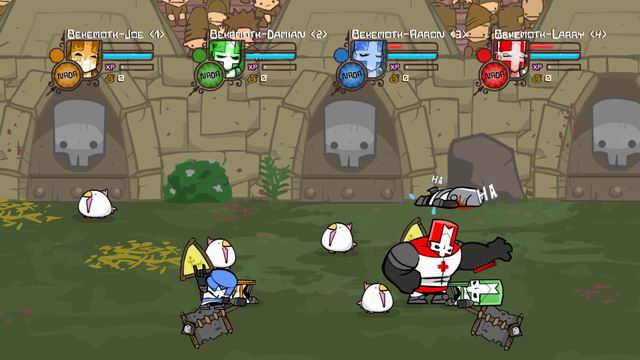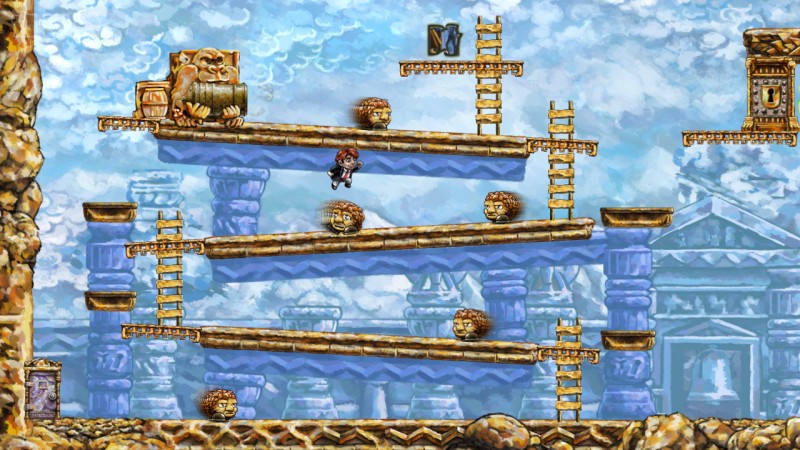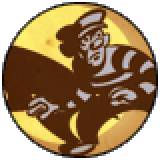Celebrating 10 Years of the Indie Revolution
By morecowbell24 0 Comments
It might be hard to believe, but indie games 10 years ago were a rarity. Most of the indie scene wasn’t taken very seriously as they were largely “flash games” living on sites like Newgrounds. That all started to change around 2008 when Xbox Live Arcade put a spotlight on the scene with their Summer of Arcade program. Suddenly smaller games were getting more recognition, and it was plain to see that it lit a new fire under the indie scene’s belly. Given that Microsoft has reignited their program as the Winter of Arcade this week, featuring games like Ashen, Below and Mutant Year: Zero among others, it feels like a good time to look back on the industry’s indie scene and how it has blossomed over the past decade.
Console online integration was reaching adolescence in 2008 and when Microsoft introduced its Summer of Arcade program most of us didn’t quite know what to expect. Xbox Live Arcade largely featured classic arcade games like Pac-Man, Smash T.V. and Joust up until that point, so it was met with the idea that the games featured would be shorter, slighter and not much more than a fun diversion to last an afternoon or two. When the lineup was revealed to feature Bionic Commando: Rearmed, Galaga Legions and Geometry Wars 2, that idea seemed to ring true. The other two games however, were Castle Crashers and Braid, and both couldn’t be better examples to lead the charge into what the indie scene has become today.
Castle Crashers represents the retro direction a good portion of the scene lives in. It brought back the long dead sidescrolling beat ‘em up genre and features a distinct visual style and sense of humor. Today we have retro future games like it all over the place. There’s Cuphead, a highly stylized take on Contra. Shovel Knight is a pixeled hybrid of action platformers of yore, Mega Man and Castlevania. Super Mario Bros. got a gritty reboot in the form of Super Meat Boy. Hyper Light Drifter puts you right back in 1987 when you first played Zelda, throwing you into a textless world and leaving you to figure it out. Mark of the Ninja reinvigorated the stealth genre, bringing Thief into the sidescrolling space. The Messenger brings back Ninja Gaiden without all the infinitely respawning frustration. The Metroidvania has grown into a staple genre with games like Hollow Knight recreating the magic that Symphony of the Night made two decades ago.

Most interesting of all is the relentless surge of Rogue-like genre. Even ten years ago it’s unlikely anyone thought the 1980 game called Rogue would come back in such a big way. Roguelikes have been around for a long time, but it has infected every corner of the indie scene. In the right hands, procedural generation and permadeath can be powerful tools as many indie developers have shown. Spelunky is a pretty basic platformer, but remains the standard by which these games are judged. Rogue Legacy brought with it some more action and permanent progression leading to a Roguelike and Roguelite genre split. FTL: Faster Than Light and Into the Breach show these types of games be powerhouses in any genre. And the recent Dead Cells shows that the genre has legs.
Then there is the survival genre, which is in many ways a rogue-ish type of game, but has grown into something so massive thanks to Minecraft that it’s its own genre now. The genre has tried to move past its building blocks with games like Ark: Survival Evolved and Conan: Exiles featuring more fantastical places to survive and build a home. Don't Starve bridges the gap between retro enthusiasm and modern survival machinations. A now maligned DayZ began as a mod, and has only just now officially released, despite being one of the prominent early players in the genre. It probably had some impact on one of the most popular genres there is today, the Battle Royale. PlayerUnknown’s Battlegrounds has similar roots and might be approaching DayZ’s maligned status, but the impact of it and the ARMA mods before it are no doubt showcased by the biggest game in the world right now, Fortnite, which is built on the foundation the survival indie scene pushed.
Braid, on the other hand certainly references the past, but is more representative of games entering the arthouse. It’s a time bending puzzler with a wonderfully twisty ending. A few years later we got Limbo, another puzzle game with a contemplative resolution, but it brought with it more atmosphere, and the indie scene took notice. Walking simulators like What Remains of Edith Finch, Abzû and the unforgettable Journey have all shown the gaming medium to be capable of things others just aren’t. Jonathan Blow’s follow up to Braid, The Witness, mixes the walking sim and puzzler trying to bring something deeper to the gaming conversation. Antichamber also feels like the best of both worlds, with puzzles that flex the mind and exploration that fold it. Also in this category, is a game called Papers, Please. It really has no peer, but feels worth mentioning as it is indicative of how experiential games can be even when they are wrapped up in the dullest thing imaginable.

Then there are sort of hybrids of both of these retro and arthouse categories. The lines are a little more blurred, but games like Bastion, Transistor and Pyre, which all happen to be made by the same team, strike a good balance between retro catharsis and profundity. Hotline Miami offers that catharsis through its brutality, but it often feels like a fever dream in its downtime. One might put aforementioned games like Hollow Knight or Hyper Light Drifter here. These games tend to be minimalist and feel profound, blending their gameplay into their narratives, offering something to the kinds of gamers that like the experience and the gamers that like the gameplay, tending to really blow away those of us that enjoy both.
The indie scene is bustling, and bringing us all sorts of excellent stuff, both tried and true and experimental. This year I look at the best games I’ve played all year and three quarters of them are budget, indie games. Games like the latest God of War show the triple A scene isn’t without passion, but at this moment, it seems pretty clear that the fire seems to be burning much brighter under our beloved indie devs. It doesn’t appear that flame is going out anytime soon either, with many more awesome indie games on the horizon.

0 Comments